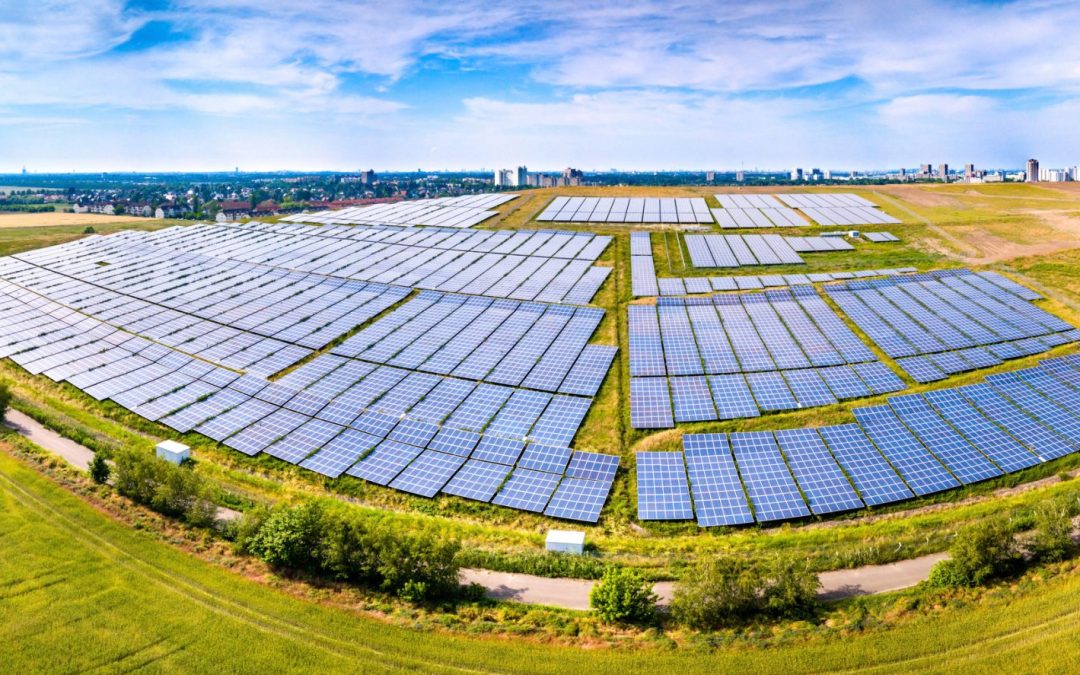Community Solar Gardens (CSGs) are sweeping Minnesota – if you don’t believe us, just check out this map created by Clean Energy Resource Teams (CERTs). Through Xcel Energy’s Solar*Rewards Community program alone, US. Solar has over 100 Megawatts of Solar Gardens in operation or development. Minnesota actually has more community solar projects and capacity than any other state! But with all the buzz around them, you may well be wondering what the reality of CSGs actually means!
What are Community Solar Gardens?
CSGs (sometimes called “Solar Farms”) are created when two or more entities get together to share the benefits – and cost! – of one single solar power system. This solar panel installation is set up in a location central to all ‘subscribers’ to the scheme – this can be grassland or even the roof of an empty property. Solar energy generated by the CSG is shared between all subscribers. In June, US Solar announced T-Mobile’s “Sunscription” to fourteen new one-megawatt (MW) US Solar Community Solar Gardens to generate clean, renewable energy, and provide energy cost savings to T-Mobile sites across Minnesota counties like Blue Earth, McLeod, Renville, Goodhue, Benton, Stearns, and Le Sueur.
Who Pays for Them?
As a subscriber, you can buy a stake in a CSG. Most of Minnesota’s CSGs are owned and operated by utilities, which offer subscriptions to their customers – the largest being Xcel Energy’s Solar*Rewards Community, though it is private solar developers, not the utility, that actually own the projects and sell the subscriptions. They are also governed through a variety of financial incentives.
Who Benefits from CSGs?
Besides the climate – of course! – businesses undertaking CSG projects receive considerable tax benefits through special purpose entity (SPE) models (see below). CSG subscribers benefit from lower energy bills; renters, people living in apartments, and Minnesotans whose homes are unsuitable for residential solar power systems have the chance to invest in solar power. The energy produced by CSGs also benefits the wider community, however, by reducing everyone’s utility bills (solar power is far cheaper than fossil fuels!) making energy more accessible to lower-income communities. All of this is before we even consider the many jobs CSG solar power installations create…
How Can My Community Get Its Own CSG?
The simplest way to access a CSG is to subscribe to an existing Minnesota scheme through your utility or a cooperative. Non-profit organizations, such as schools and churches are also partnering with their members or donors (such as the congregation or school parents) to fund a CSG through tax-deductible donations – though technically these donors will not reap direct financial benefits from the scheme. Community members can also join together to form a business through an SPE model to find and operate an independent commercial solar power project. In this case, contributors will see an investment return over time.
Want to Learn More?
Cedar Creek Energy, your go-to solar energy company in Minnesota, will be happy to answer any questions you have about setting up a CSG. Cedar Creek Energy has installed CSGs around Minnesota in St. Paul, Mankato, St. Cloud, Zumbrota, and others. Having worked with businesses and non-profits on CSGs, we can talk you through all the different options available and help you decide on your best course of action. Get in touch today, to find out how we can help!

